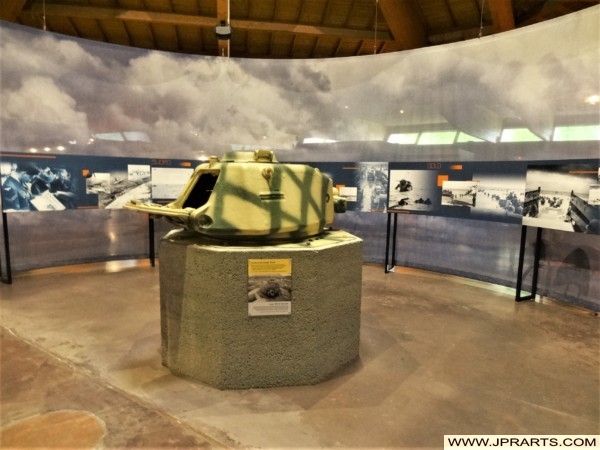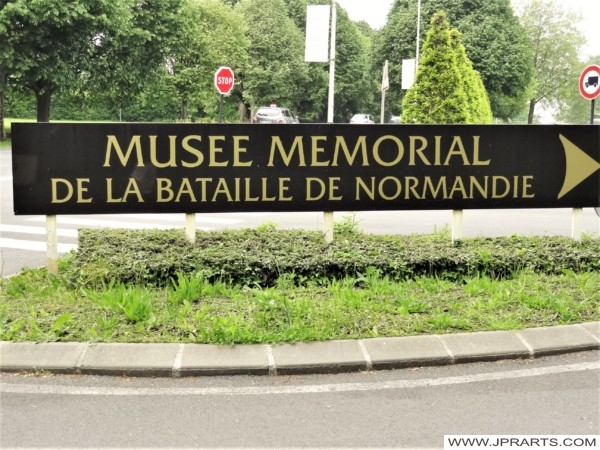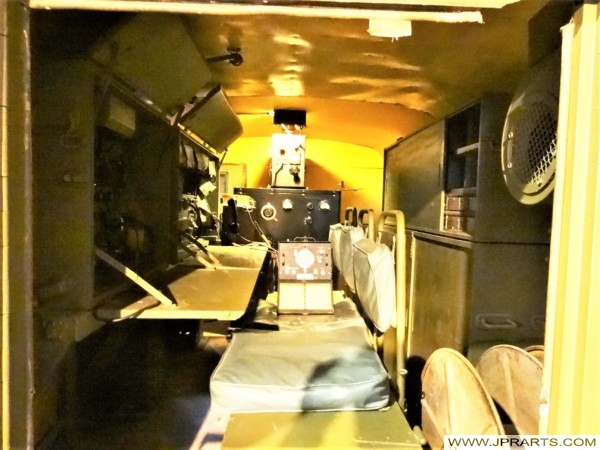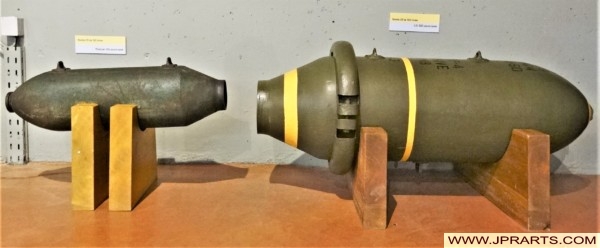Mulberry Harbours were two temporary portable harbours developed by the British Admiralty and War Office during the Second World War to facilitate the rapid offloading of cargo onto beaches during the Allied invasion of Normandy in June 1944. Designed in 1942 and then built in under a year in great secrecy, within hours of the Allies successfully creating beachheads following D-Day, sections of the two prefabricated harbours and old ships, to be sunk to create breakwaters, were being towed across the English Channel from southern England and placed in position off Omaha Beach (Mulberry “A”) and Gold Beach (Mulberry “B”).
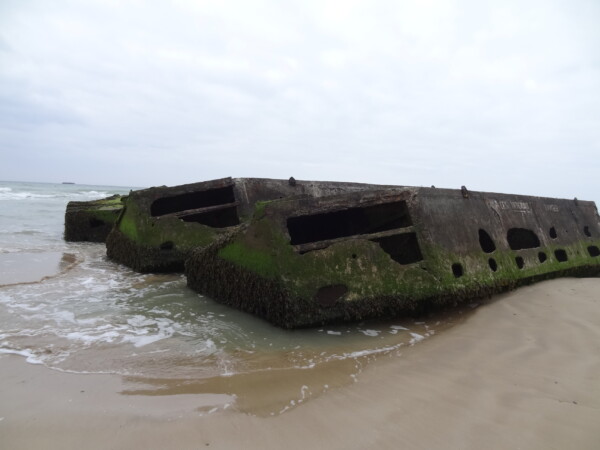
Gold Beach (Normandy, France)
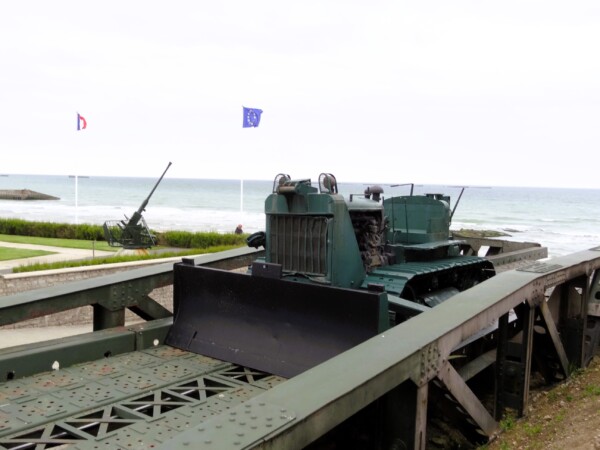
Playa de Gold (Normandía, Francia)

Gold Beach ((Normandie, Frankreich)
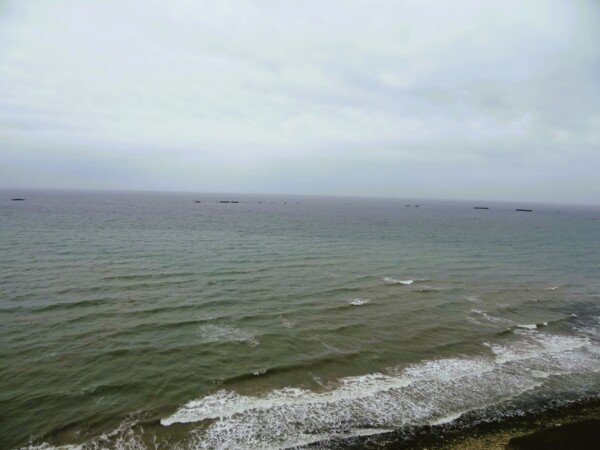
ゴールド・ビーチ (フランス、ノルマンディー)
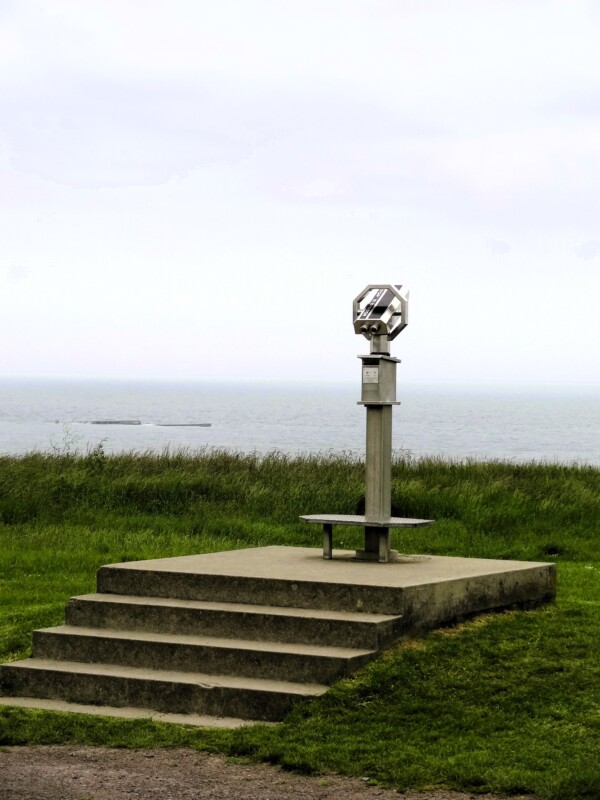
The Mulberry harbours solved the problem of needing deep water jetties and a harbour to provide the invasion force with the necessary reinforcements and supplies, and were to be used until major French ports could be captured and brought back into use after repair of the inevitable sabotage by German defenders. Comprising floating but sinkable breakwaters, floating pontoons, piers and floating roadways, this innovative and technically difficult system was being used for the first time.
غولد بيتش (إنزال النورماندي)
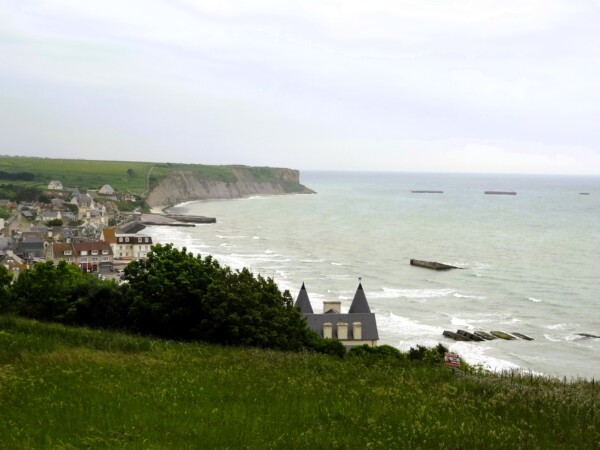
Gold Beach (Normandie, France)

Gold Beach (Normandië, Frankrijk)
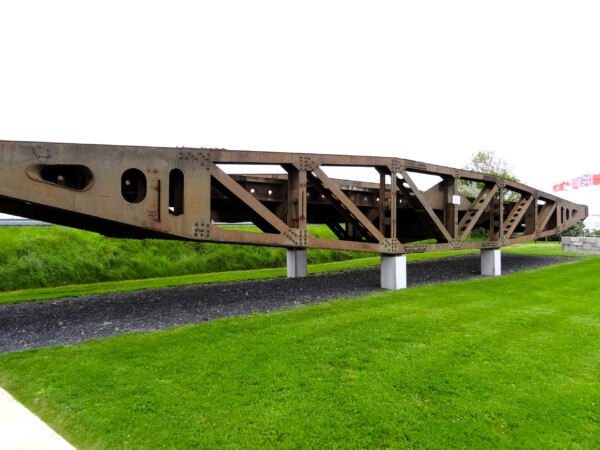
Голд-Бич (Нормандия, Франция)

The Mulberry B harbour at Gold Beach was used for 10 months after D-Day, and over 2.5 million men, 500,000 vehicles, and 4 million tons of supplies were landed before it was fully decommissioned. The still only partially-completed Mulberry A harbour at Omaha Beach was damaged on 19 June by a violent storm that arrived from the north-east before the pontoons were securely anchored. After three days the storm finally abated and damage was found to be so severe that the harbour had to be abandoned and the Americans had to resort to landing men and material over the open beaches.
골드 해변 (프랑스 노르망디)
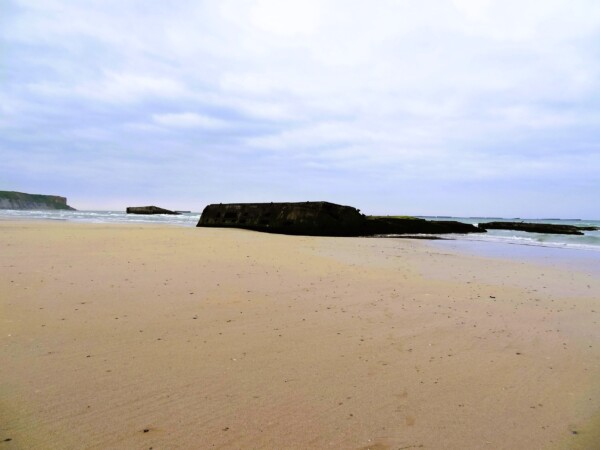
Plaża Gold (Normandia, Francja)
Visit France Travel to Book Flights and Hotels Cheap Online
Visit Cheap Shopping to Order Blu-rays, Books and DVDs Cheap Online






